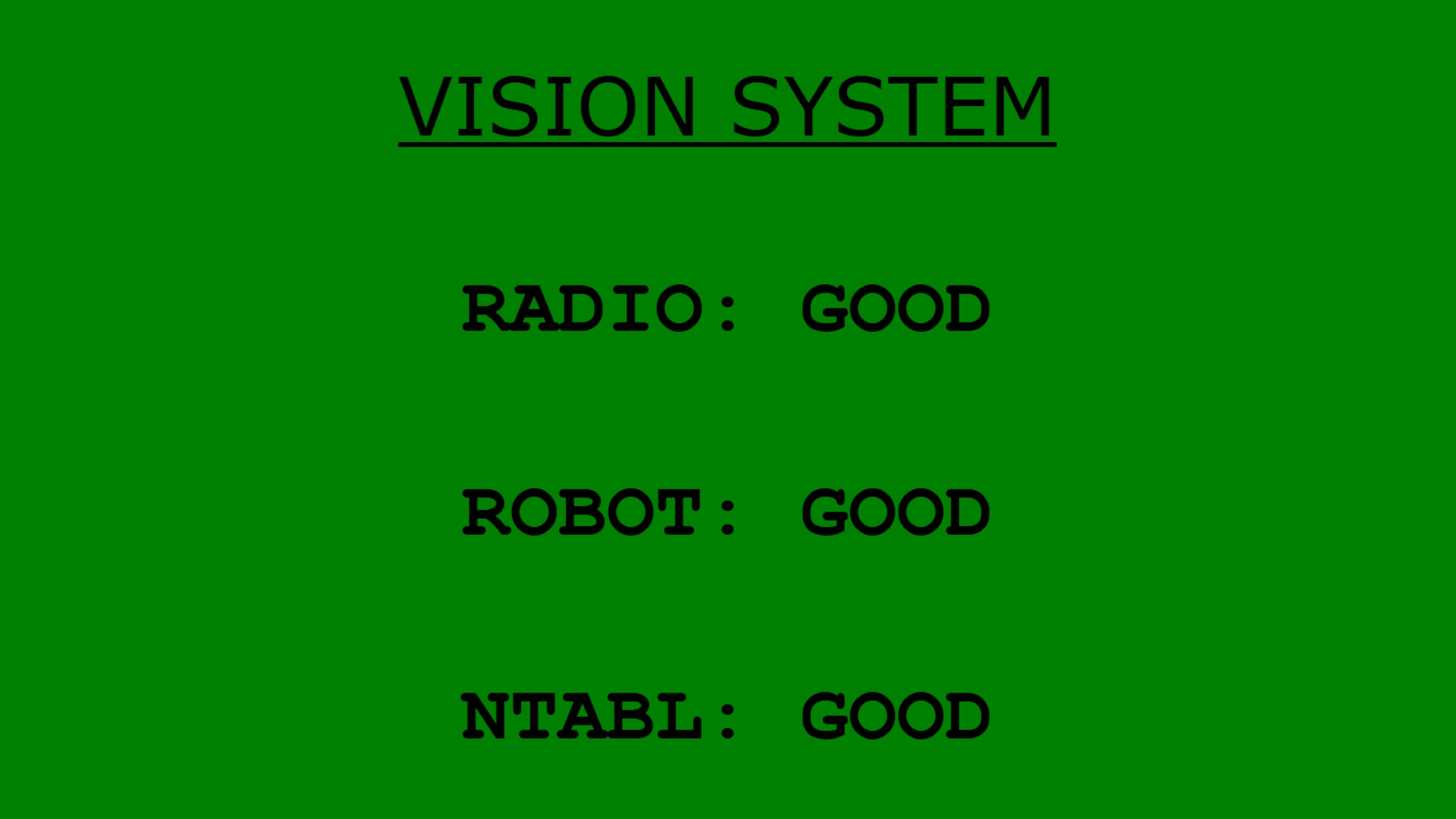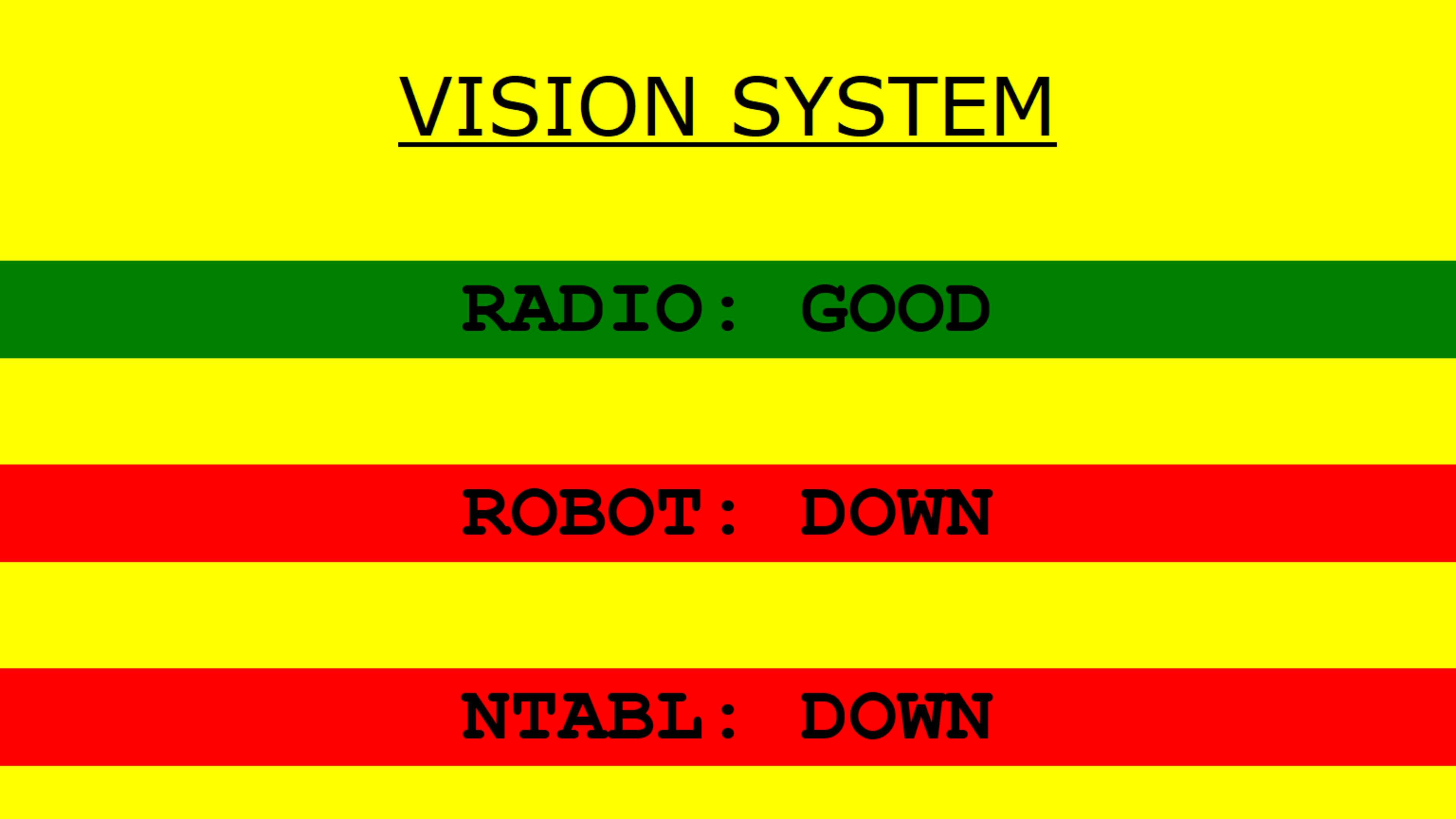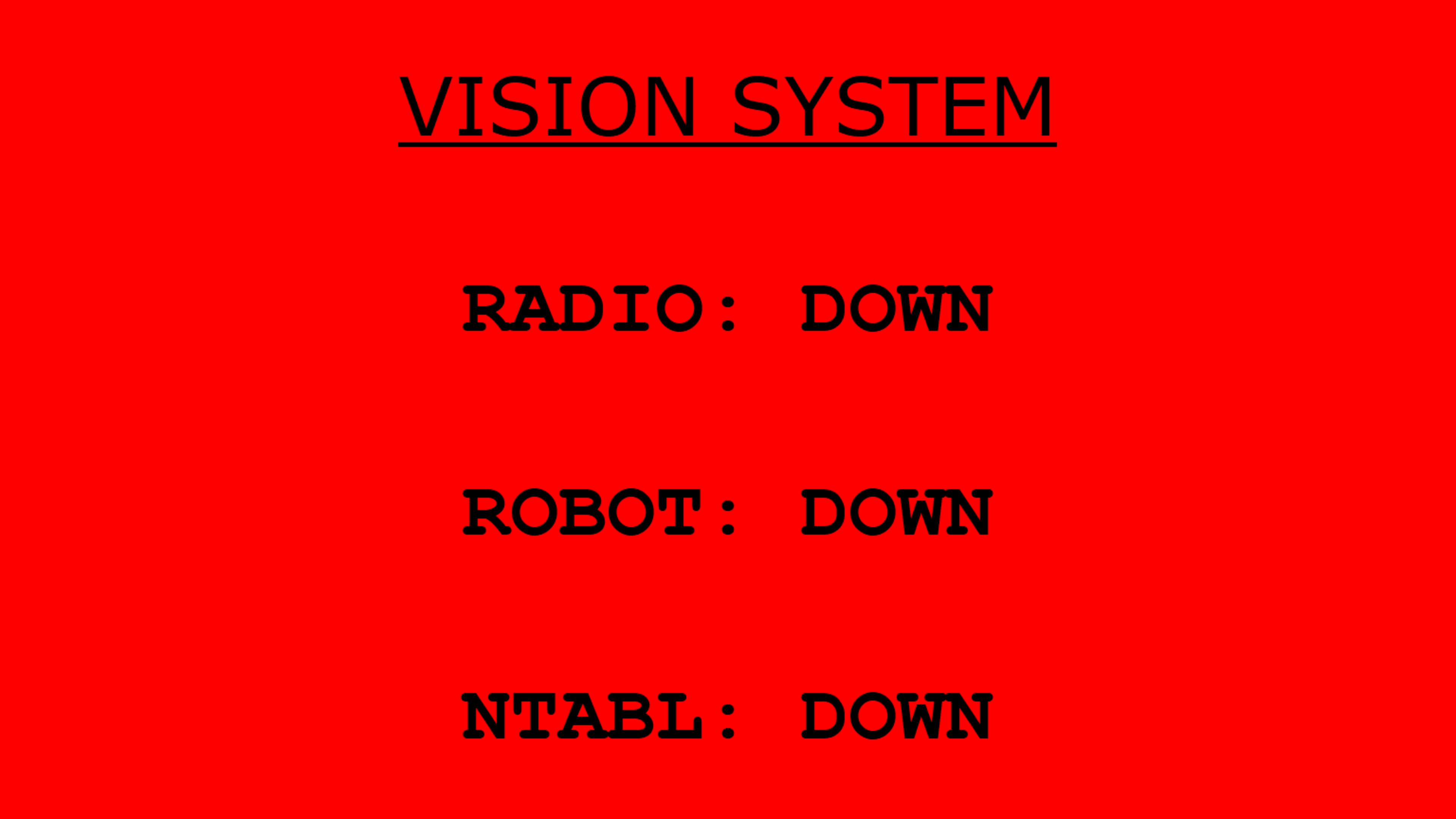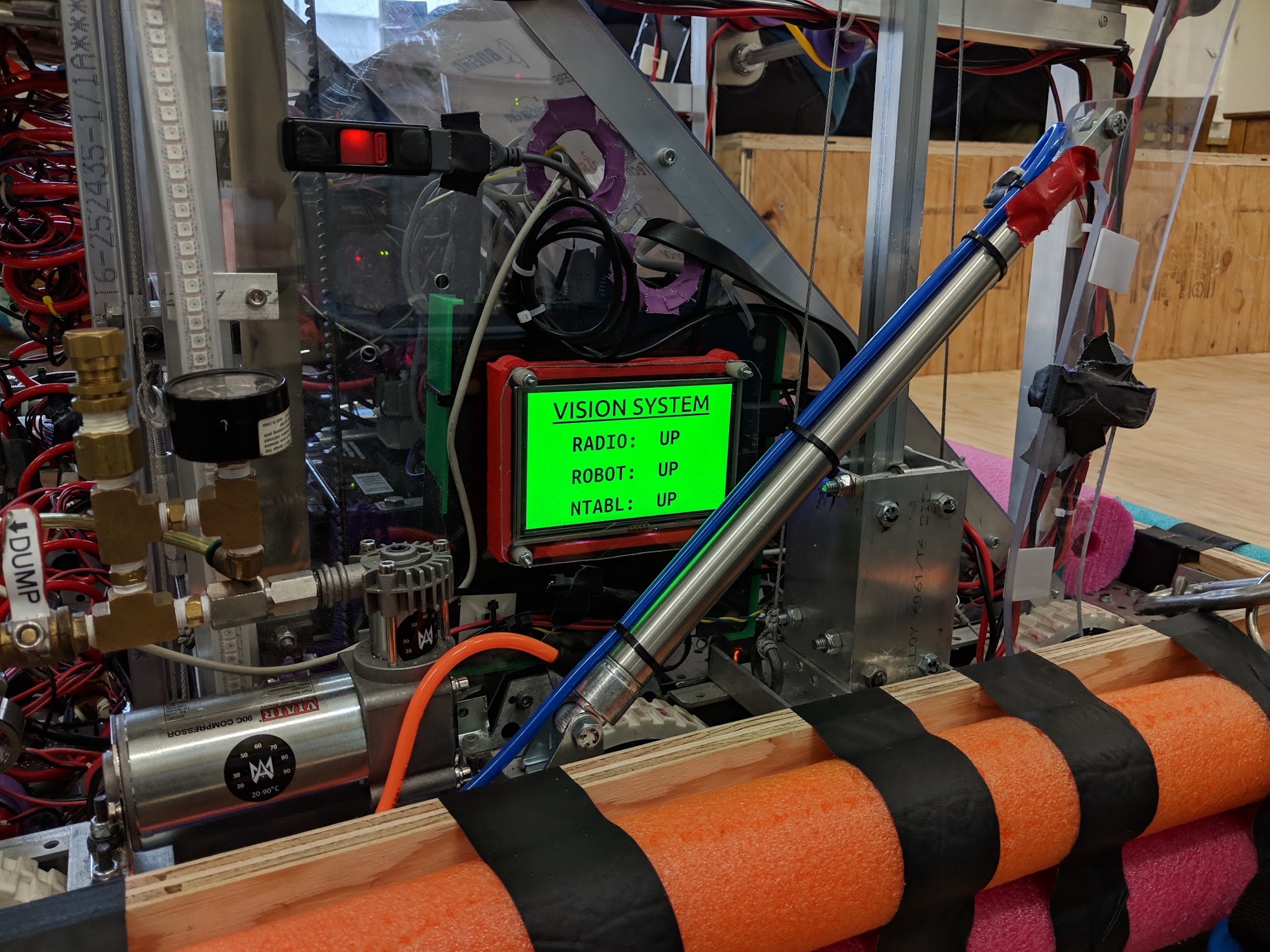Before starting the program, you must install OpenCV >= v3.1.x along with the pip dependencies:
$ pip install -r requirements.txtThen, you can run the program using:
$ python run.pyFull usage:
usage: run.py [-h] [-i IMAGE] [-s SOURCE] [-t TEAM] [-d] [-na MIN_AREA]
[-xa MAX_AREA] [-nf MIN_FULL] [-xf MAX_FULL]
[-l LOWER_COLOR [LOWER_COLOR ...]]
[-u UPPER_COLOR [UPPER_COLOR ...]] [-tn] [-v]
If you are using Docker, the installation process is much easier.
Note: due to the sizes of the images that are installed as part of the build process, it is recommended to have a few GB of hard disk space available when building.
First, cd to this repository and then run docker build . -t vision. All existing config files will be used in the build process to make the image.
This will produce a docker image which can be run using:
$ docker run --device /dev/video0 visionMake sure that you have a camera connected before running this!
SERT's vision software comes with a connection status GUI to help debug connection issues. This GUI can be displayed on a monitor connected to the co-processor. We use an Adafruit 5" screen.
RADIOchecks connection to the robot's radio (at10.XX.XX.1)ROBOTchecks connection to the roboRIO (at10.XX.XX.2)NTABLchecks connection to the NetworkTables server on the roboRIO
| Good | Warning | Bad |
|---|---|---|
| Connection is good and system is ready. | Some connections are down. | No connection. Ensure ethernet is plugged in. |
 |
 |
 |
All command-line arguments may be configured in the config.ini file
(located at config/config.ini). For example, the --lower-rgb
argument may be edited using the lower-rgb line in the config.ini.
optional arguments:
-h, --help show this help message and exit
-i IMAGE, --image IMAGE
path to image
-s SOURCE, --source SOURCE
video source (default=0)
-t TEAM, --team TEAM the team of the target roboRIO
-d, --display display results of processing in a new window
-na MIN_AREA, --min-area MIN_AREA
minimum area for blobs
-xa MAX_AREA, --max-area MAX_AREA
maximum area for blobs
-nf MIN_FULL, --min-full MIN_FULL
minimum fullness of blobs
-xf MAX_FULL, --max-full MAX_FULL
maximum fullness of blobs
-l LOWER_COLOR [LOWER_COLOR ...], --lower-color LOWER_COLOR [LOWER_COLOR ...]
lower color threshold in HSV
-u UPPER_COLOR [UPPER_COLOR ...], --upper-color UPPER_COLOR [UPPER_COLOR ...]
upper color threshold in HSV
-tn, --tuning open in tuning mode
-v, --verbose for debugging, prints useful values
For use with the Microsoft Lifecam 3000, the camera's exposure should be set manually because the Lifecam will auto-adjust otherwise, making thresholding difficult. This can be done with V4L:
$ sudo apt-get install v4l-utils
$ v4l-ctl -d /dev/video0 -c exposure_auto=1 # 1=DISABLED, 3=ENABLED
$ v4l-ctl -d /dev/video0 -c exposure_absolute=50
